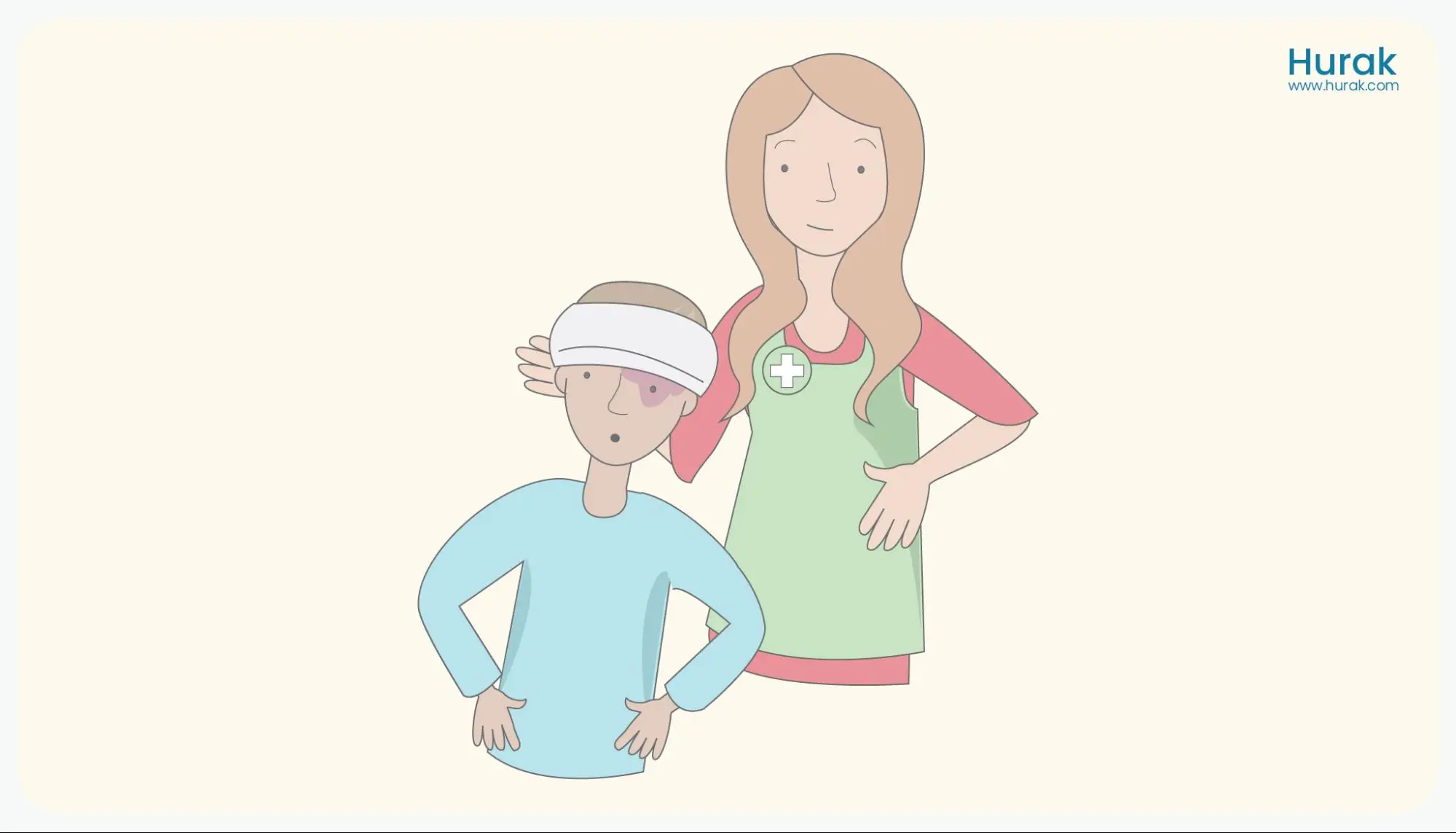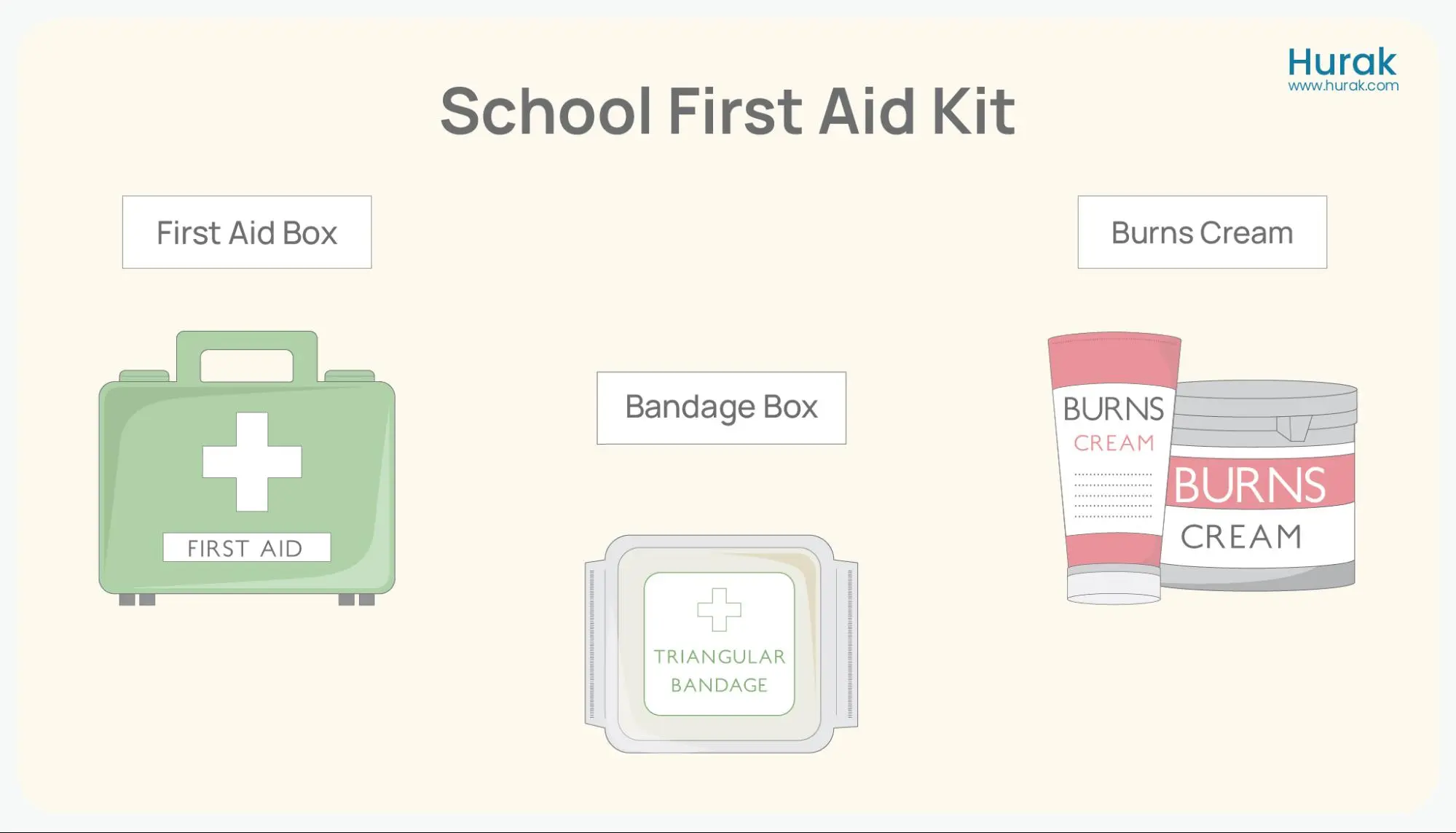Accidents and emergencies are bound to happen in a school’s active environment, where children constantly learn, play, and grow. Having trained personnel and a structured first aid program can help maintain the safety and well-being of students and staff alike.
Why First Aid Matters in Schools
First aid is not just about addressing physical injuries; it includes a range of skills that can save lives. It helps prevent injuries from worsening and provides immediate care until professional help arrives. The importance of first aid in school includes the following:
Immediate Response to Accidents
Schools carry out activities where accidents like cuts, falls, or burns can occur. Knowledge of first aid equips teachers and staff to respond promptly and appropriately.
Life-Saving Potential
In critical situations such as cardiac arrests, choking incidents, or severe allergic reactions, quick action through first aid techniques can help save lives.
Promoting Safety Awareness
Teaching first aid creates a culture of safety awareness among students, encouraging them to take responsibility for their well-being and that of others.
First Aid in School Policy as a Legal Requirement
Schools are places where learning happens, but they must also be safe. When accidents or medical emergencies happen, having the right knowledge and tools for first aid can make a difference.
Schools are legally required to ensure student safety. In the United Kingdom, laws require schools to have enough first aid supplies, medical staff, and training. But beyond laws, schools have a moral duty to keep students safe by being ready for medical emergencies.
Under the Health and Safety (First Aid) Regulations 1981, first aid should always be available at schools and colleges. The availability applies on campus or during off-site activities like field trips. Regulations say employers must provide the right first aid equipment, facilities, and trained staff based on a first aid assessment. The basic first aid requirements for schools and colleges are:
- A suitable first aid kit is stocked according to the assessment, meeting minimum standards suggested by HSE.
- An appointed person or designated first aider(s) responsible for first aid.
- Information for staff about where to find equipment, facilities, and first aid personnel.
How To Include First Aid in the School Curriculum
To ensure comprehensive coverage, schools can include first aid education into their curriculum through:
Structured Training Programs
Formal first aid courses are part of physical education or health classes.
Simulation Exercises
Conduct regular drills and simulations to practice emergency response scenarios.
Continuous Learning
Providing refresher courses and updates to keep skills current among staff and students.
Get Trained in All First-Aid Skills
First Aid Courses
Book NowRated Excellent
on major review sites

What are the Types of First Aid Needed in Schools
Schools should prepare for various types of first aid scenarios, including:
Emergency First Aid
Dealing with immediate, life-threatening situations such as cardiac arrest, severe bleeding, or unconsciousness.
Basic First Aid
Treating minor injuries like cuts, bruises, sprains, and burns common among children during daily activities.
Mental First Aid
Addressing emotional distress, anxiety, or panic attacks in students is increasingly recognised as essential alongside physical first aid.
What Does First Aid Training in School Involve?
First aid training in schools teaches students essential skills:
- calling emergency services
- assessing safety
- communicating with the injured
- treating cuts, bleeding, and burns
- applying bandages
- assisting with fractures and CPR
- handling head injuries, allergies, and nosebleeds
- preparing students to respond confidently in medical emergencies.
The Department for Education made first aid training compulsory for students in England’s state-funded schools in 2020. It is now part of children’s health education and varies by age group.


Ready to Learn More?
Put your knowledge of the importance of first aid in schools into practice by enrolling in a course today! Our First Aid courses offer complete training to help you handle critical situations. Whether you want to improve your skills or workplace safety, these courses help build confidence and expertise. View our Emergency First Aid at Work (EFAW) and Level 3 First Aid at Work courses. These courses meet the UK legal requirements and help you keep people safe.
First Aid Learning for Primary School Students
- Basic first aid for common injuries, including head injuries.
- How to call emergency services.
First Aid Learning for Secondary School Students
- Basic first aid for injuries and illnesses.
- Life-saving skills like CPR.
- How and when to use a defibrillator.
What is the Importance of Mental Health First Aid at School
Mental health first aid is like regular first aid but for mental health. It is often overlooked, but it is very important.
Nowadays, young people struggle with mental health issues. School staff should know about mental health first aid and get trained.
Mental health first aid teaches school staff how to spot signs that a young person might be having mental health problems. Staff must be able to notice these signs early and know how to help someone in a crisis. This training is especially important for staff in secondary schools.
What should a School First Aid Kit Contain?
A school first aid kit should contain everything needed for common accidents. It should include the following items:
- bandages
- antiseptic wipes
- gauze for cuts and scrapes
- splints
- ice packs
- EpiPen for allergies
- saline solution for washing wounds or eyes
- CPR face shields
- burn gel
- inhaler for anaphylactic shock.
Checking and replacing items regularly keeps the kit ready for any emergency.

Who can Administer First-Aid Training in Schools?
First Aid Training in school is delivered by qualified people. Determining who should be responsible for first aid in schools is critical:
Trained Personnel:
- Designated staff members
- Teachers
- Administrators
- School Nurses
Before delivering first aid training to pupils, they should undergo regular training and CPR certification.
What are the Positive Impacts of First Aid in Schools
An effective first aid program in school has several benefits:
- Increased Safety: Immediate response reduces the severity of injuries and accidents, creating a safer school environment overall.
- Empowerment: Both staff and students feel empowered and confident in their ability to handle emergencies effectively.
- Community Engagement: Involving parents and the broader community in first aid workshops or training sessions leads to a collaborative approach to safety.
What Qualifications are Required by a First Aider at School?
First-aiders need to have specific qualifications:
1. They must have a valid certificate in either:
- First aid at work
- Emergency first aid at work
- Any other suitable training based on what the school needs.
It is a legal requirement for schools and early years providers that all staff have first-aid training. At least one person must have a current paediatric first-aid certificate. This person must be present whenever children are around and go on trips with them.
Conclusion
First aid is a life-saving practice. By prioritising first aid education and preparedness, schools improve safety and nurture a community where compassion and responsibility thrive. From physical injuries to mental health crises, the ability to respond promptly and effectively ensures that schools provide necessary protection and support. Introducing basic first aid skills into the curriculum empowers students to assist others and potentially save lives in emergencies.




